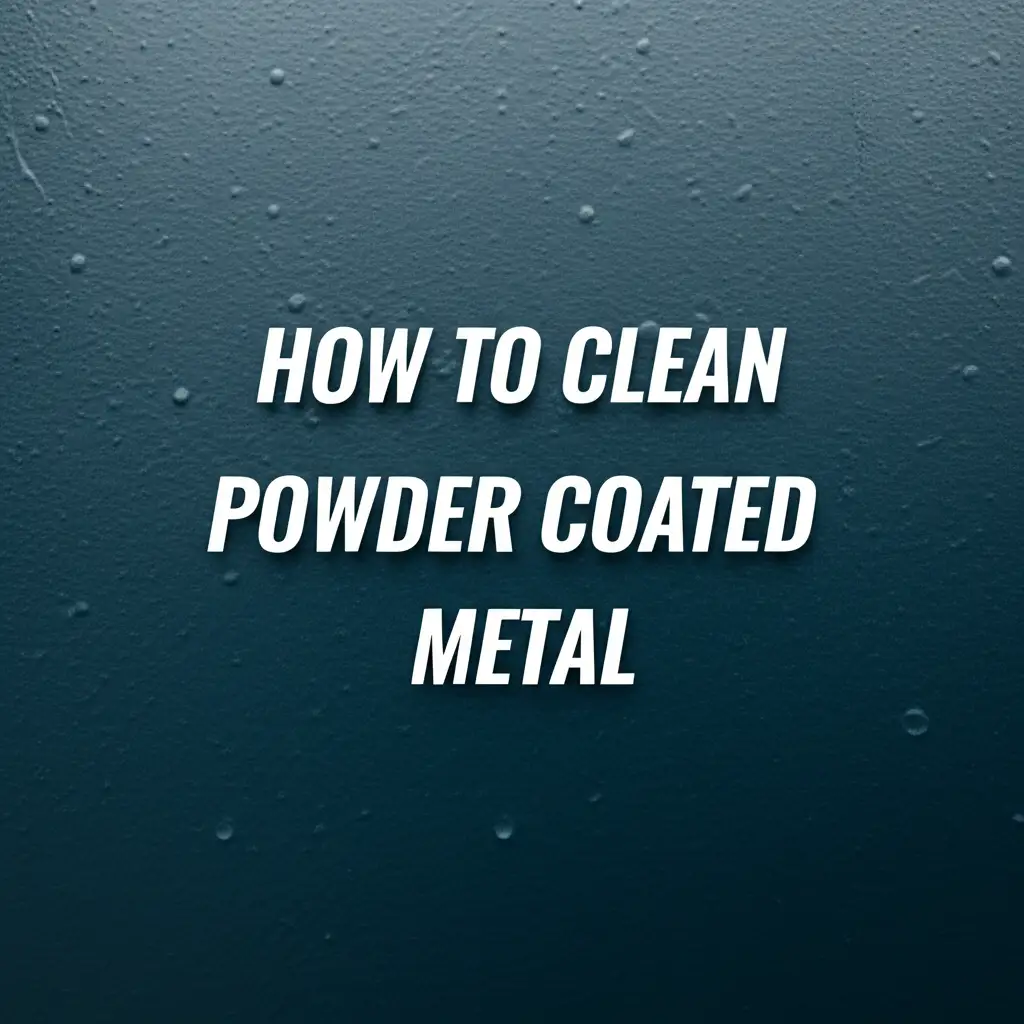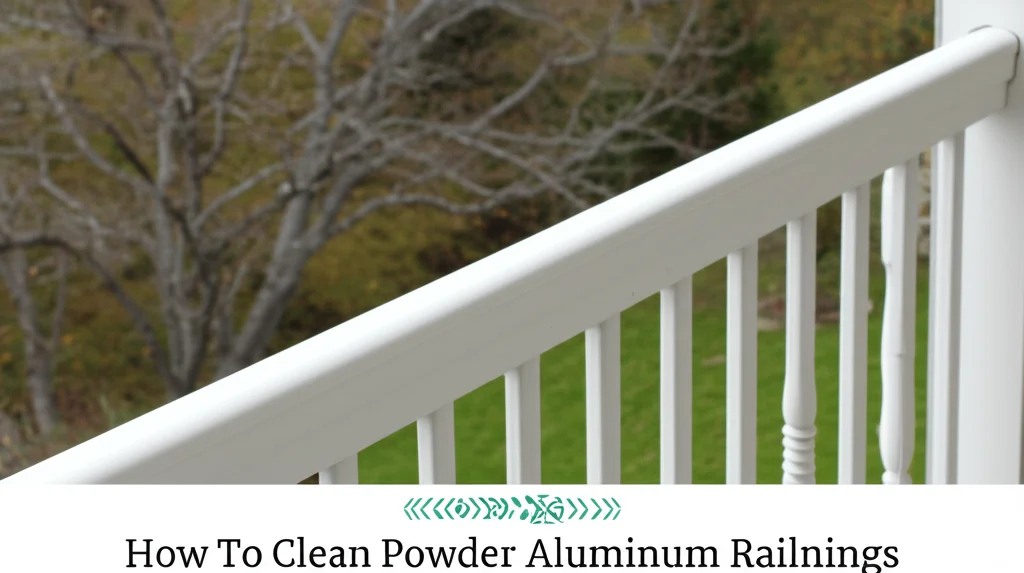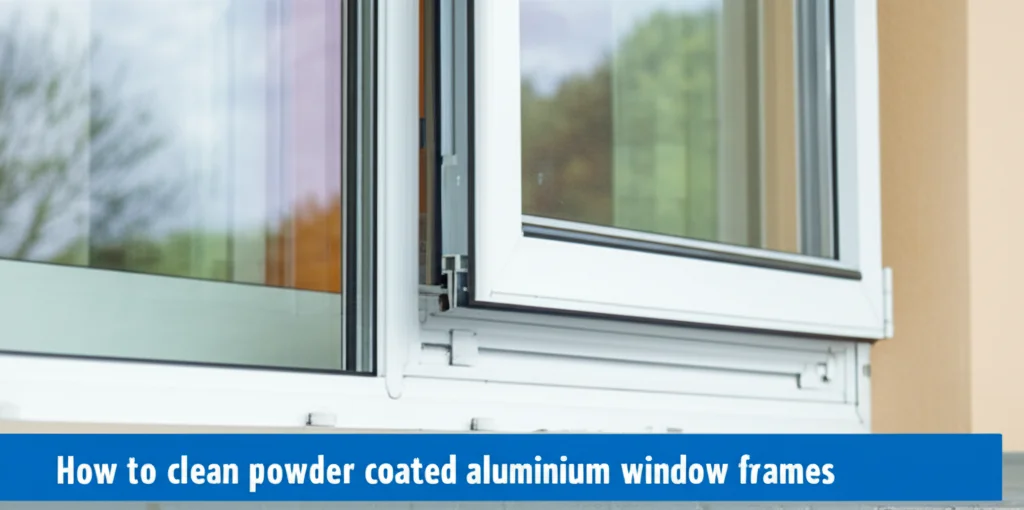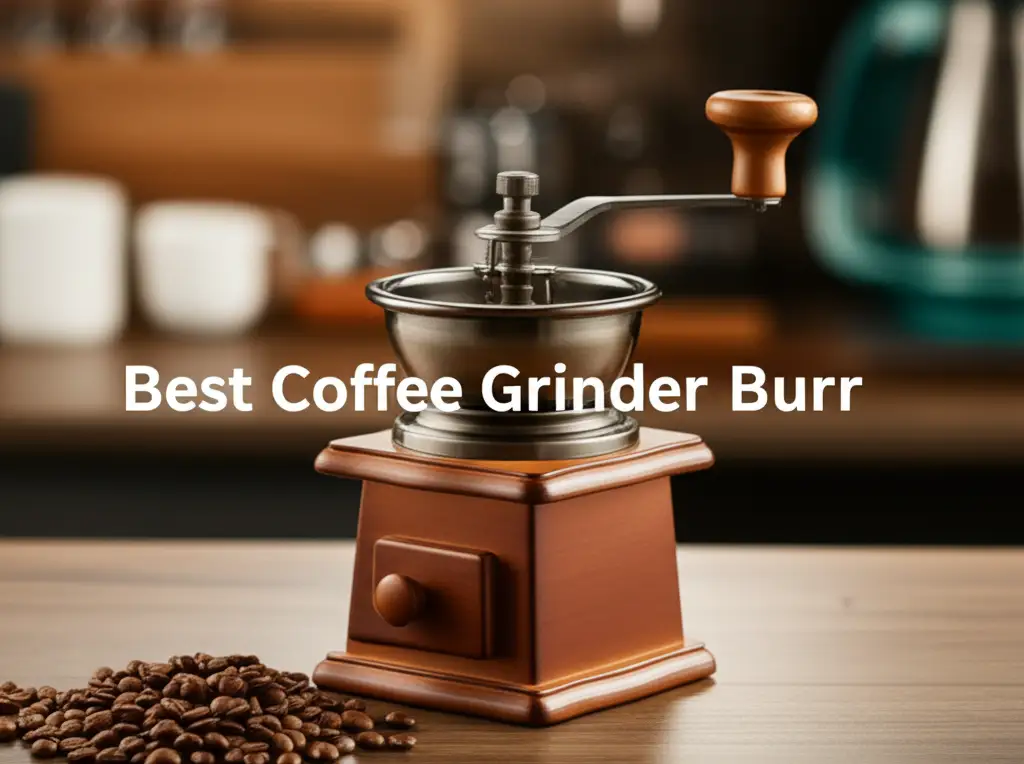· Metal Cleaning & Care · 16 min read
How To Clean Powder Coated Metal

How To Clean Powder Coated Metal
Powder coated metal products offer great durability. This finish resists chips and scratches. Many objects in your home or garden use this tough coating. Think of outdoor furniture, railings, or even car parts. Keeping these items clean helps them look good and last longer. Knowing the right way to clean powder coated metal is important. This guide gives you simple steps and tips.
Maintaining the beauty and integrity of powder coated metal requires specific cleaning methods. You do not want to damage its protective layer. Using harsh chemicals or abrasive tools can ruin the finish. This article will show you safe and effective ways. We cover everything from routine cleaning to tackling tough stains. You will learn how to make your powder coated items shine again.
Takeaway
- Use mild soap and warm water for routine cleaning.
- Always use a soft cloth or sponge; avoid abrasive materials.
- Rinse thoroughly to remove all soap residue.
- Address stubborn stains like mold or rust with appropriate, gentle methods.
- Consider a protective wax for added shine and longevity.
- Avoid harsh chemicals, solvents, and pressure washers.
To clean powder coated metal, use a soft cloth with a mixture of mild dish soap and warm water. Gently wipe the surface to remove dirt and grime. Rinse the item completely with clean water. Dry it immediately with another clean, soft cloth to prevent water spots.
Understanding Powder Coated Surfaces
Powder coating is a dry finishing process. It uses finely ground particles of pigment and resin. These particles are electrostatically charged. They are then sprayed onto an electrically grounded metal surface. The charged powder sticks to the metal. Next, the metal moves into a curing oven. Heat melts the powder into a smooth, durable finish. This creates a solid layer over the metal.
This finish is very strong. It protects against scratches, chips, and corrosion. Powder coating is tougher than traditional liquid paint. It also offers good resistance to UV light. This means colors stay bright longer, even outdoors. Because of its durability, powder coated metal is popular. You find it on outdoor furniture, car wheels, fences, and appliances.
The thickness of the powder coat contributes to its strength. It forms a uniform layer. This layer acts as a barrier against moisture and wear. Proper cleaning helps preserve this barrier. It ensures the finish continues to protect the metal underneath. Understanding how powder coating works helps us clean it correctly. We want to clean without compromising its protective qualities.
Many items benefit from powder coating. For instance, metal railings often feature this finish for durability. If you have black metal railings, they likely have a powder coat. Knowing how to care for them extends their life. This specialized cleaning process keeps them looking new.
Gathering Your Essential Cleaning Supplies
Before you start cleaning, gather the right tools. Having everything ready makes the job easier. It also ensures you clean the powder coated metal safely. Using the correct supplies is important to protect the finish. You do not want to accidentally scratch or damage the surface. I always make sure I have all my items organized.
Your primary cleaning solution will be simple. You need a mild dish soap. Look for one without harsh chemicals or degreasers. A gentle soap is best. It cleans without stripping or harming the powder coat. I prefer using a soap that creates good suds.
Next, you need soft cleaning tools. Microfiber cloths are excellent choices. They are non-abrasive and highly absorbent. Sponges are also good, as long as they are soft. Avoid anything abrasive like steel wool or stiff brushes. These can scratch the finish easily.
You will also need a bucket for your cleaning solution. A spray bottle can be useful for spot cleaning. Make sure you have access to clean water for rinsing. A garden hose works well for larger items. Finally, a separate dry, soft cloth is necessary for drying. Prompt drying prevents water spots.
Here is a simple list of supplies:
- Mild dish soap: Gentle, non-abrasive.
- Two clean buckets: One for soapy water, one for rinse water.
- Soft microfiber cloths: Several pieces are helpful.
- Soft sponge: For gentle scrubbing.
- Garden hose or spray bottle: For rinsing.
- Soft towel or shammy: For drying.
Having these items ready ensures a smooth cleaning process. It helps you protect your powder coated metal.
Step-by-Step General Cleaning Process
Cleaning powder coated metal regularly helps maintain its appearance. It also extends its lifespan. This general cleaning process is simple. It applies to most powder coated items. Following these steps helps you clean without causing damage. I find a consistent routine keeps my items looking their best.
1. Rinse the Surface
First, remove any loose dirt or debris. Use a garden hose to rinse the entire surface. If you are cleaning a small item, use a spray bottle. This step is important. It prevents scratching the finish when you start scrubbing. Any grit on the surface can act as an abrasive.
2. Prepare the Cleaning Solution
Fill a bucket with warm water. Add a few drops of mild dish soap. Stir until you see suds. The water should feel warm, not hot. This gentle solution cleans effectively. It does not harm the powder coating.
3. Wash the Powder Coated Metal
Dip a soft microfiber cloth or sponge into the soapy water. Begin washing the powder coated surface. Work in small sections. Use gentle, circular motions. Do not scrub hard. The goal is to lift dirt, not to scrape it off. For vertical surfaces, start from the top and work your way down. This prevents dirty water from streaking.
4. Rinse Thoroughly
After washing a section, rinse it immediately with clean water. You can use a garden hose or a clean, wet cloth. Remove all soap residue. Leftover soap can leave streaks or dull the finish. Ensure no suds remain on the surface.
5. Dry the Surface
Finally, dry the powder coated metal immediately. Use a clean, soft towel or shammy. Drying prevents water spots. It also helps achieve a streak-free shine. Air drying can leave mineral deposits. These deposits are especially visible in hard water areas. I always make sure to dry completely for a pristine look.
Following these steps ensures your powder coated items stay clean and protected. This routine works for many items, like outdoor furniture.
Tackling Stubborn Stains and Issues
Sometimes, powder coated metal faces more than just dirt. Stubborn stains or issues can appear. These need special attention. Addressing them correctly prevents permanent damage. I have faced many tough spots on my own items.
Rust Stains
Powder coating protects against rust, but deep scratches or chips can expose the metal underneath. When this happens, rust can form. For minor rust spots, you might use a rust remover. Choose a product specifically for painted or coated surfaces. Always test it on an inconspicuous area first. Apply the rust remover with a soft cloth. Gently rub the rust spot. Rinse the area thoroughly after application. If the rust is severe, you may need to sand it lightly and apply a touch-up paint.
Mold and Mildew
Powder coated surfaces in humid areas can develop mold or mildew. This is common on outdoor items. To clean mold, mix one part white vinegar with one part water. White vinegar is a gentle cleaner for many surfaces. Apply this solution with a soft cloth or sponge. Let it sit for a few minutes. Then, gently scrub the affected area. Rinse well with clean water. For tougher mold, a solution of bleach and water (1 part bleach to 10 parts water) might be necessary. However, use bleach sparingly and test first. Always rinse thoroughly after using bleach. This method is effective, like how to clean mold off a grill which often has powder-coated parts. If you are cleaning other mold issues, remember how to clean mold with vinegar is a great general option.
Grease and Oil Stains
Grease and oil can leave unsightly marks. For these, start with your mild dish soap solution. Dish soap is good at breaking down grease. If the stain persists, a small amount of rubbing alcohol on a clean cloth can work. Apply alcohol sparingly. Wipe the stain. Rinse the area immediately afterward. Never use strong solvents like paint thinners. They can damage the powder coat.
Scratches and Chips
Scratches and chips expose the metal. This makes it vulnerable to rust. For minor scratches, a touch-up pen or paint made for powder coated surfaces works well. Clean the area first. Apply the paint carefully. Follow the product instructions for drying. For larger chips, you might need to sand lightly and prime before painting. This helps blend the repair.
Addressing these issues promptly keeps your powder coated metal looking its best. It also prevents further damage.
Specific Applications of Powder Coated Metal Cleaning
Powder coated metal appears in many forms. Each application might have slightly different cleaning needs. While the core principles remain the same, considering the item’s use helps. I always think about where the item is before I start cleaning.
Outdoor Furniture
Outdoor powder coated furniture endures weather elements. This means more dirt, pollen, and possibly mold. Regular cleaning is crucial. Use the mild soap and water method weekly or bi-weekly. Pay attention to crevices where dirt can accumulate. A soft brush can help with textured surfaces. Rinse thoroughly to prevent water spots, especially in direct sunlight. Drying completely is very important for outdoor items.
Automotive Parts (Wheels, Frames)
Automotive parts, like powder coated wheels, face harsh road grime. They get brake dust, oil, and road salt. For these, a dedicated car wash soap is often better than dish soap. Car soaps are designed for automotive finishes. Use a separate wash mitt for wheels to avoid transferring grime to your car’s paint. Rinse wheels frequently during washing. This washes away abrasive particles. After washing, a wheel sealant can add protection. This makes future cleaning easier.
Fences and Railings
Powder coated fences and railings are exposed to constant outdoor elements. They can get dirty quickly. A garden hose with good pressure is helpful for the initial rinse. Follow with the mild soap and soft brush. For tall fences or railings, use an extendable brush. This makes reaching high spots safer. Remember to rinse from top to bottom. This prevents streaks on lower sections. If you have black metal railings, these steps apply directly. Regular cleaning prevents buildup that can lead to corrosion.
Appliances and Indoor Items
Indoor powder coated items, like appliance exteriors, gather dust and fingerprints. They typically need less intense cleaning. A damp microfiber cloth often suffices for daily wiping. For smudges or light grime, a spray bottle with a mild soap solution works. Spray onto the cloth, not directly onto the appliance. This avoids over-wetting controls or electrical components. Always wipe dry for a clean, streak-free finish. These items usually do not need heavy scrubbing.
Considering the specific environment helps tailor your cleaning approach. This ensures effective and safe maintenance for all your powder coated metal items.
Maintaining and Protecting Powder Coated Metal
Cleaning is only one part of caring for powder coated metal. Regular maintenance and applying protective measures extend its life. These steps help your items resist damage. They also keep them looking new for years. I have seen items last much longer with proper care.
Establish a Cleaning Schedule
Consistency is key. Develop a regular cleaning schedule. For outdoor items, clean monthly or quarterly, depending on exposure. Indoor items might only need cleaning every few months. More frequent cleaning is better in dusty or high-traffic areas. A regular schedule prevents dirt buildup. It also makes each cleaning session easier and quicker.
Apply a Protective Coating
After cleaning, consider applying a protective coating. A car wax or a specialized powder coat sealant works well. These products create an extra barrier. This barrier helps repel water and dirt. It also offers some UV protection. This reduces fading over time. Apply the wax thinly with a soft applicator. Buff it off with a clean microfiber cloth. This adds shine and makes future cleaning simpler. I often use a spray wax for quick application on larger surfaces.
Inspect for Damage
Periodically inspect your powder coated items. Look for any scratches, chips, or signs of wear. Early detection of damage is important. Addressing small issues prevents them from becoming major problems. If you find a chip, touch it up quickly. This prevents rust from starting on the exposed metal.
Store Properly
If possible, store outdoor powder coated items indoors during harsh weather. This includes extreme heat, cold, or heavy storms. Covering furniture with breathable covers also helps. Proper storage reduces exposure to elements. This extends the life of the finish significantly. For items like grills, cleaning them and covering them after each use is ideal. This is similar to the advice for how to clean mold off a grill – prevention through good habits.
Avoid Harsh Impact
Powder coating is durable, but not indestructible. Avoid dropping heavy objects on powder coated surfaces. Do not use sharp tools near them. Any impact that causes chipping can compromise the finish. Being careful helps maintain the protective layer.
By following these maintenance and protection tips, your powder coated metal will stay in excellent condition. It will continue to provide durability and beauty for a long time.
What to Avoid When Cleaning Powder Coated Metal
While knowing what to do is crucial, understanding what not to do is equally important. Using the wrong products or methods can severely damage your powder coated finish. This damage often appears as dulling, discoloration, or even complete failure of the coating. I have seen too many good finishes ruined by improper cleaning.
Harsh Chemicals and Solvents
Never use strong chemical cleaners. This includes paint thinners, acetone, lacquer thinners, and strong ammonia-based cleaners. These chemicals are too aggressive for powder coating. They can dissolve or soften the coating. This leads to permanent damage. Bleach should also be used with extreme caution and only diluted for specific issues like severe mold, always tested first, and rinsed thoroughly. Alcohol should also be used sparingly and rinsed well. Stick to mild, pH-neutral soaps.
Abrasive Cleaners and Tools
Avoid abrasive cleaners. This means no scouring powders, abrasive pads, or steel wool. These materials scratch the surface. Even fine scratches can dull the finish over time. They also create tiny openings. These openings allow moisture to penetrate, potentially leading to corrosion. Always use soft microfiber cloths or sponges. If you need to scrub, choose a soft-bristle brush designed for delicate surfaces.
High-Pressure Washers
Using a high-pressure washer can cause damage. The force of the water can lift the powder coating. It can create chips or delamination. This is especially true if the nozzle is held too close to the surface. A standard garden hose is sufficient for rinsing. It provides enough pressure without risking the integrity of the finish.
Hot Water (Excessive)
While warm water is fine, excessively hot water should be avoided. Very hot water can sometimes affect the long-term durability of the coating. It can also cause cleaning solutions to dry too quickly. This leaves streaks. Use warm water for cleaning.
Leaving Cleaning Solutions to Dry
Do not allow cleaning solutions, especially soapy water, to dry on the surface. Soap residue can leave streaks and water spots. It can also attract more dirt. Always rinse thoroughly after cleaning. Dry the surface immediately afterward. This ensures a clean, spot-free finish.
Over-Scrubbing
Even with soft tools, over-scrubbing can cause issues. Excessive friction can generate heat. It can also wear down the finish over time. Use gentle motions. Let the cleaning solution do most of the work. If a stain is tough, reapply the solution and let it sit longer. Then try gentle scrubbing again.
By avoiding these common mistakes, you protect your powder coated metal. You ensure it remains beautiful and durable for many years. Proper care involves both knowing what to use and what to skip.
FAQ Section
How often should I clean powder coated metal?
The frequency depends on exposure. For outdoor items, clean monthly or quarterly. Items in harsh environments, like coastal areas, may need more frequent cleaning. Indoor items usually require cleaning every few months. Regular cleaning prevents heavy dirt buildup.
Can I use automotive wax on powder coated metal?
Yes, you can use automotive wax. Car wax provides a protective layer. This layer helps repel water and dirt. It also offers some UV protection. Apply it after cleaning and drying the surface. This adds shine and makes future cleaning easier.
Is vinegar safe for powder coated surfaces?
Vinegar is generally safe for powder coated surfaces when diluted. Use a 1:1 solution of white vinegar and water for mold or light stains. Always rinse the surface thoroughly with clean water afterward. Test on an inconspicuous area first to ensure no adverse reaction.
How do I remove scratches from powder coated metal?
For minor scratches, a touch-up pen or paint designed for powder coated surfaces works best. Clean the scratched area first. Apply the paint according to the product instructions. For deeper chips, you may need to sand lightly and prime before painting to ensure proper adhesion.
What causes powder coating to fade?
UV exposure is the primary cause of fading. Over time, sunlight breaks down the pigments in the coating. Harsh chemicals or abrasive cleaning can also contribute to fading by damaging the protective layer. Regular cleaning and protective waxes help minimize fading.
Can I pressure wash powder coated metal?
No, avoid using a high-pressure washer. The strong force of the water can lift or chip the powder coating. This damages the finish. A standard garden hose provides sufficient pressure for rinsing. It cleans without risking the integrity of the coating.
Conclusion
Cleaning powder coated metal does not have to be difficult. You now have the knowledge to maintain these durable surfaces. Remember, the key is gentleness and consistency. Using mild soaps and soft tools protects the finish. This ensures the coating continues to provide its excellent protection. It also keeps your items looking their best.
Regular maintenance extends the life and beauty of your powder coated items. Whether it is outdoor furniture, automotive parts, or railings, proper care makes a difference. Avoid harsh chemicals and abrasive methods at all costs. These can quickly ruin the very finish designed to last.
By following these simple guidelines, you can keep your powder coated metal in pristine condition. Your efforts will ensure its durability and aesthetic appeal for many years to come. Take pride in preserving the investments you have made in these robust products. Start cleaning your powder coated metal today!
- powder coating care
- metal finish cleaning
- rust removal from powder coat
- exterior metal cleaning




